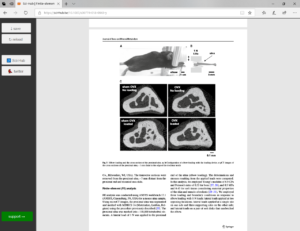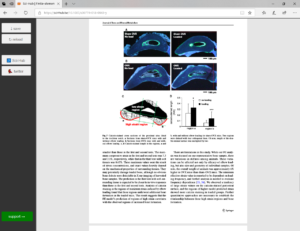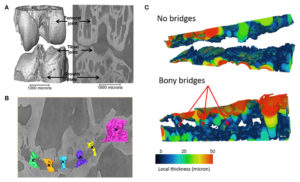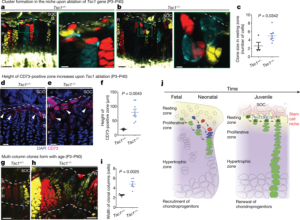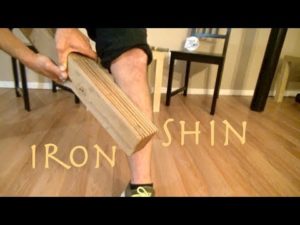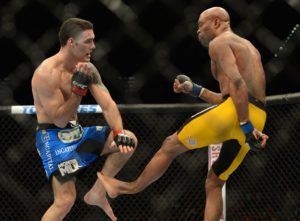Here’s an interesting Jeffrey Baron paper who’s done a lot of growth research. Essentially, smaller bones undergo senescence earlier so the chondrocytes undergo less proliferation cycles.
“Bones at different anatomical locations vary dramatically in size. For example, human femurs are 20-fold longer than the phalanges in the fingers and toes. The mechanisms responsible for these size differences are poorly understood. Bone elongation occurs at the growth plates and advances rapidly in early life but then progressively slows due to a developmental program termed “growth plate senescence.”{estrogen may be responsible for this senescence} This developmental program includes declines in cell proliferation and hypertrophy, depletion of cells in all growth plate zones, and extensive underlying changes in the expression of growth-regulating genes. Here, we show evidence that these functional, structural, and molecular senescent changes occur earlier in the growth plates of smaller bones (metacarpals, phalanges) than in the growth plates of larger bones (femurs, tibias) and that this differential aging contributes to the disparities in bone length. We also show evidence that the molecular mechanisms that underlie the differential aging between different bones involve modulation of critical paracrine regulatory pathways, including insulin-like growth factor (Igf), bone morphogenetic protein (Bmp), and Wingless and Int-1 (Wnt) signaling. Taken together, the findings reveal that the striking disparities in the lengths of different bones, which characterize normal mammalian skeletal proportions, is achieved in part by modulating the progression of growth plate senescence.”
<-So if the change in body proportions is a result of senescence shouldn’t the body proportions be different in someone with different senescence such as someone with no estrogen receptors. We know that body proportions are different in dwarfism.
“. The rate of long bone elongation (length/time) is primarily determined by the rate of chondrocyte proliferation (cells/time) per column multiplied by the cell height (length/cell) achieved after chondrocyte hypertrophy”
“During mammalian embryonic development, all long bones form from mesenchymal condensations of similar size. However, different long bones diverge in growth rate, ultimately leading to dramatic differences in bone length. ”
“the rates of bone elongation at the proximal tibia and the distal femur, measured by calcein labeling, were greater than those of the metacarpal bones and proximal phalanges. Some previous studies have attributed these differences in growth rate between bones to differences in the size attained by the hypertrophic chondrocytes of the growth plate. However, the rate of bone elongation is also dependent on chondrocyte proliferation and is approximated by the height of the terminal hypertrophic chondrocyte in the column multiplied by the chondrocyte proliferation rate per cell column ”
” a chondrocyte near the top of the growth plate in the larger bones would go through more rounds of cell division before slowing and ceasing proliferation compared with the smaller bones.”<-So how do we get chondrocytes to undergo more rounds of cell division? There are number of factors. A number of senescence related genes are mentioned in the study itself. IGF2 is a key one.
“Growth plate senescence is characterized not only by a decline in proliferation rates but also by a gradual structural involution of the growth plate, including declines in the overall height of each growth plate zone and the number of chondrocytes in each zone.”

